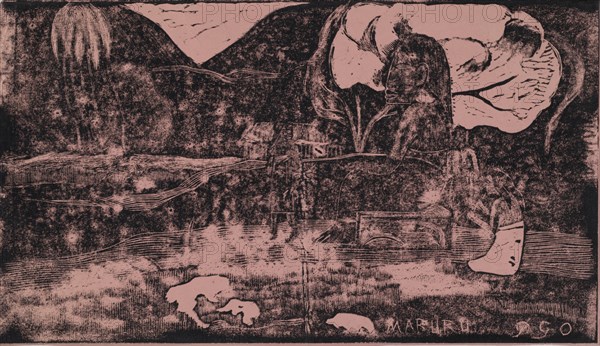
Sujet
Noa Noa: Offerings of Gratitude (Maruru), 1893-1894. Creator: Paul Gauguin (French, 1848-1903).
Légende
Noa Noa: Offerings of Gratitude (Maruru), 1893-1894. In August 1893, Gauguin returned to France from his first trip to Tahiti. To explain his art to a public that would find its Polynesian flora and fauna perplexing, he published an account of his voyage, a project for which he made ten woodcuts. Gauguin chose endgrain boxwood for a matrix, usually used only for wood engravings. While in some areas he inventively scratched into the surface of the blocks with needle and sandpaper?methods borrowed from lithography?he boldly cut and chiseled other areas in broad, decorative planes, undoubtedly influenced by the uninflected flat passages in Félix Vallotton's woodcuts. He enhanced the directness and vigor of his carving by reworking blocks and varying the ink, paper, colours, and mode of printing for each impression. Gauguin often created a blurred effect, bathing the image in the mysterious, suggestive atmosphere of night. The Noa Noa suite describes the cycle of life. It begins with images of the gods, of woman, and of religion (Maruru); contains scenes of daily life; and ends with evocations of love-making, terror, and death and rebirth. The set is also a metaphor for the evolution of human self-awareness; Gauguin wrestled with the dichotomy between guilt-ridden European ideas and the fantastical, unspoiled world of Polynesia.
Crédit
Photo12/Heritage Images/Heritage Art
Notre référence
HRM19G20_341
Model release
NA
Property release
NA
Licence
Droits gérés
Format disponible
52,8Mo (4,5Mo) / 47,8cm x 27,6cm / 5649 x 3264 (300dpi)